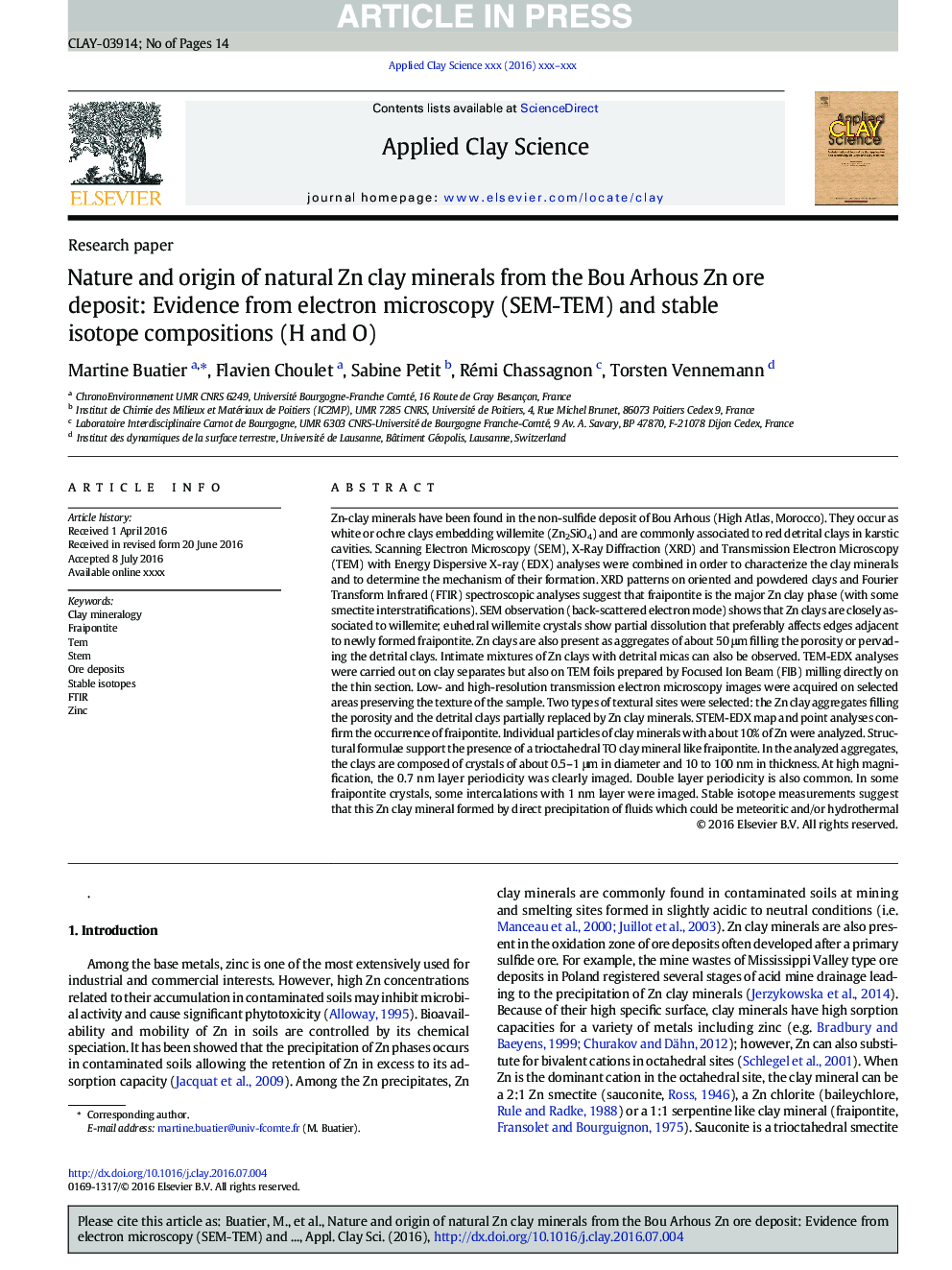| Article ID | Journal | Published Year | Pages | File Type |
|---|---|---|---|---|
| 5468769 | Applied Clay Science | 2016 | 14 Pages |
Abstract
Zn-clay minerals have been found in the non-sulfide deposit of Bou Arhous (High Atlas, Morocco). They occur as white or ochre clays embedding willemite (Zn2SiO4) and are commonly associated to red detrital clays in karstic cavities. Scanning Electron Microscopy (SEM), X-Ray Diffraction (XRD) and Transmission Electron Microscopy (TEM) with Energy Dispersive X-ray (EDX) analyses were combined in order to characterize the clay minerals and to determine the mechanism of their formation. XRD patterns on oriented and powdered clays and Fourier Transform Infrared (FTIR) spectroscopic analyses suggest that fraipontite is the major Zn clay phase (with some smectite interstratifications). SEM observation (back-scattered electron mode) shows that Zn clays are closely associated to willemite; euhedral willemite crystals show partial dissolution that preferably affects edges adjacent to newly formed fraipontite. Zn clays are also present as aggregates of about 50 μm filling the porosity or pervading the detrital clays. Intimate mixtures of Zn clays with detrital micas can also be observed. TEM-EDX analyses were carried out on clay separates but also on TEM foils prepared by Focused Ion Beam (FIB) milling directly on the thin section. Low- and high-resolution transmission electron microscopy images were acquired on selected areas preserving the texture of the sample. Two types of textural sites were selected: the Zn clay aggregates filling the porosity and the detrital clays partially replaced by Zn clay minerals. STEM-EDX map and point analyses confirm the occurrence of fraipontite. Individual particles of clay minerals with about 10% of Zn were analyzed. Structural formulae support the presence of a trioctahedral TO clay mineral like fraipontite. In the analyzed aggregates, the clays are composed of crystals of about 0.5-1 μm in diameter and 10 to 100 nm in thickness. At high magnification, the 0.7 nm layer periodicity was clearly imaged. Double layer periodicity is also common. In some fraipontite crystals, some intercalations with 1 nm layer were imaged. Stable isotope measurements suggest that this Zn clay mineral formed by direct precipitation of fluids which could be meteoritic and/or hydrothermal
Related Topics
Physical Sciences and Engineering
Earth and Planetary Sciences
Geochemistry and Petrology
Authors
Martine Buatier, Flavien Choulet, Sabine Petit, Rémi Chassagnon, Torsten Vennemann,
